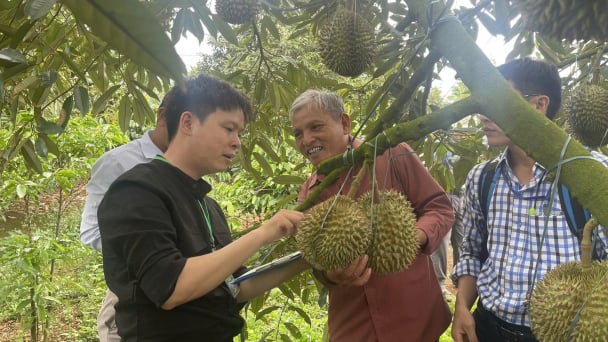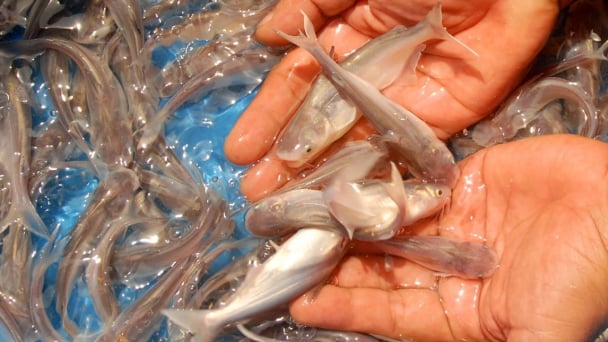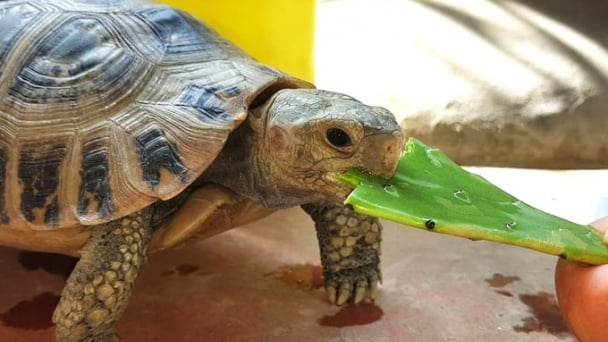May 31, 2025 | 10:10 GMT +7
May 31, 2025 | 10:10 GMT +7
Hotline: 0913.378.918
May 31, 2025 | 10:10 GMT +7
Hotline: 0913.378.918

Farm workers labor in a strawberry field on August 5, 2022 near Ventura, California. The Environmental Protection Agency will continue to allow pesticide chlorpyrifos, which has been linked to developmental harm in children, to be used on 11 crops including strawberries.
Chlorpyrifos is banned in places like the European Union and a handful of U.S. states due to its links to brain damage in children. The insecticide is a type of organophosphate, a class of chemicals that were repurposed as nerve agents by the Germans in World War II.
The EPA attempted to ban chlorpyrifos in 2021 after a federal court ruled the agency must prohibit the chemical or find a way to regulate it. That ban was overturned in 2023 by the U.S. Court of Appeals for the Eighth Circuit, which said the agency didn’t consider whether it could allow some uses of chlorpyrifos to continue.
EPA’s latest restrictions revoke all tolerances for chlorpyrifos, except for exempted crops. Tolerances establish the amount of pesticide allowed on food, and a revocation effectively bans its use.
Still, the announcement is somewhat symbolic. Since 2022, manufacturers have already voluntarily agreed to stop producing chlorpyrifos except for the 11 crops in question.
The 11 crops exempted from the rule made up about 55% of total chlorpyrifos usage on agricultural commodities from 2014 to 2018, prior to the EPA’s first attempt at a ban. However, the EPA also said the new restrictions could decrease the average annual pounds of chlorpyrifos applied in the U.S. by 70% compared to historical usage.
Growers allowed to use chlorpyrifos still face additional restrictions based on their location. The EPA will again review registration for chlorpyrifos in 2026, at which point the agency could again try to ban the chemical or add more restrictions.
Young children prenatally exposed to high levels of chlorpyrifos were significantly more likely to experience cognitive and physical delays, according to studies from Columbia University. The chemical is also linked to Attention-Deficit/Hyperactivity Disorder.
“The newly proposed restrictions are a step forward, but they fall short of fully protecting children, farmworkers, and our food supply,” Patti Goldman, attorney at Earthjustice, said in a statement. “Unless the EPA acts quickly to finalize proposed food bans on chlorpyrifos and other organophosphates, it will leave children without desperately needed protections.”
agriculturedive

(VAN) For the durian industry to succeed, the value chain must fulfill its commitments to the government, the community, and international partners.

(VAN) Vaccinating juvenile pangasius helps reduce disease, antibiotic use, and farming costs, increasing profits for export-oriented farmers in An Giang.

(VAN) Due to a limited supply of workforce and competitive recruitment requirements, businesses struggle to retain talented veterinary human resources.

(VAN) WOAH’s guidance aims to mitigate disease risks through a One Health approach that balances economic, conservation, and public health interests.

(VAN) Ms. Nguyen Thi Dung, Deputy Director of Ngoc Hoang Cooperative, shared about the journey of bringing dragon fruit to Europe, achieving annual revenues in the billions of VND.

(VAN) Bamboo products from Thang Tho Bamboo Cooperative have reached many countries around the world, while also creating jobs for local workers.

(VAN) The Management Board of Con Dao National Park reported that a green sea turtle, tagged in the Philippines, has traveled thousands of kilometers to lay 84 eggs on Bay Canh Islet.